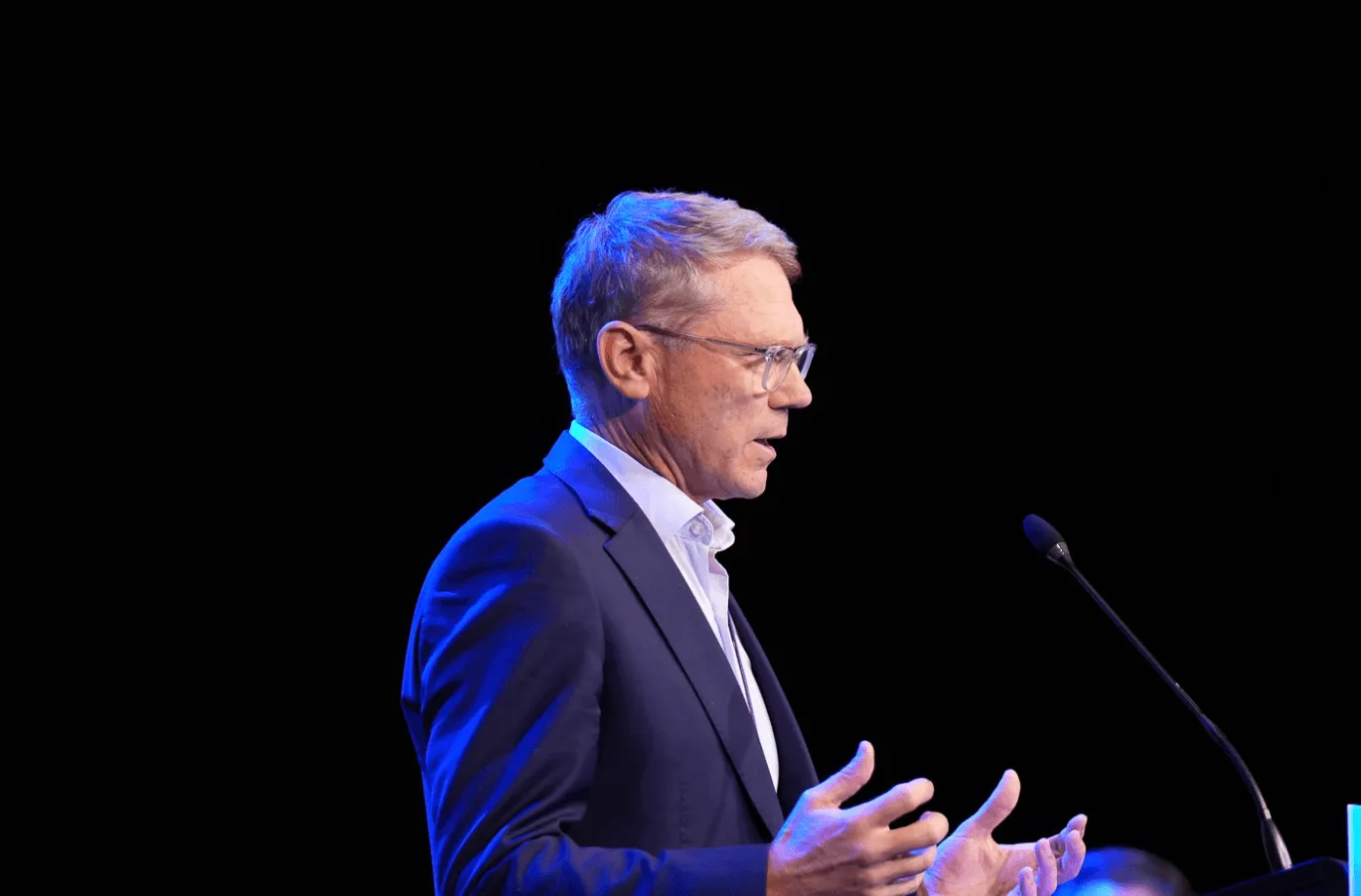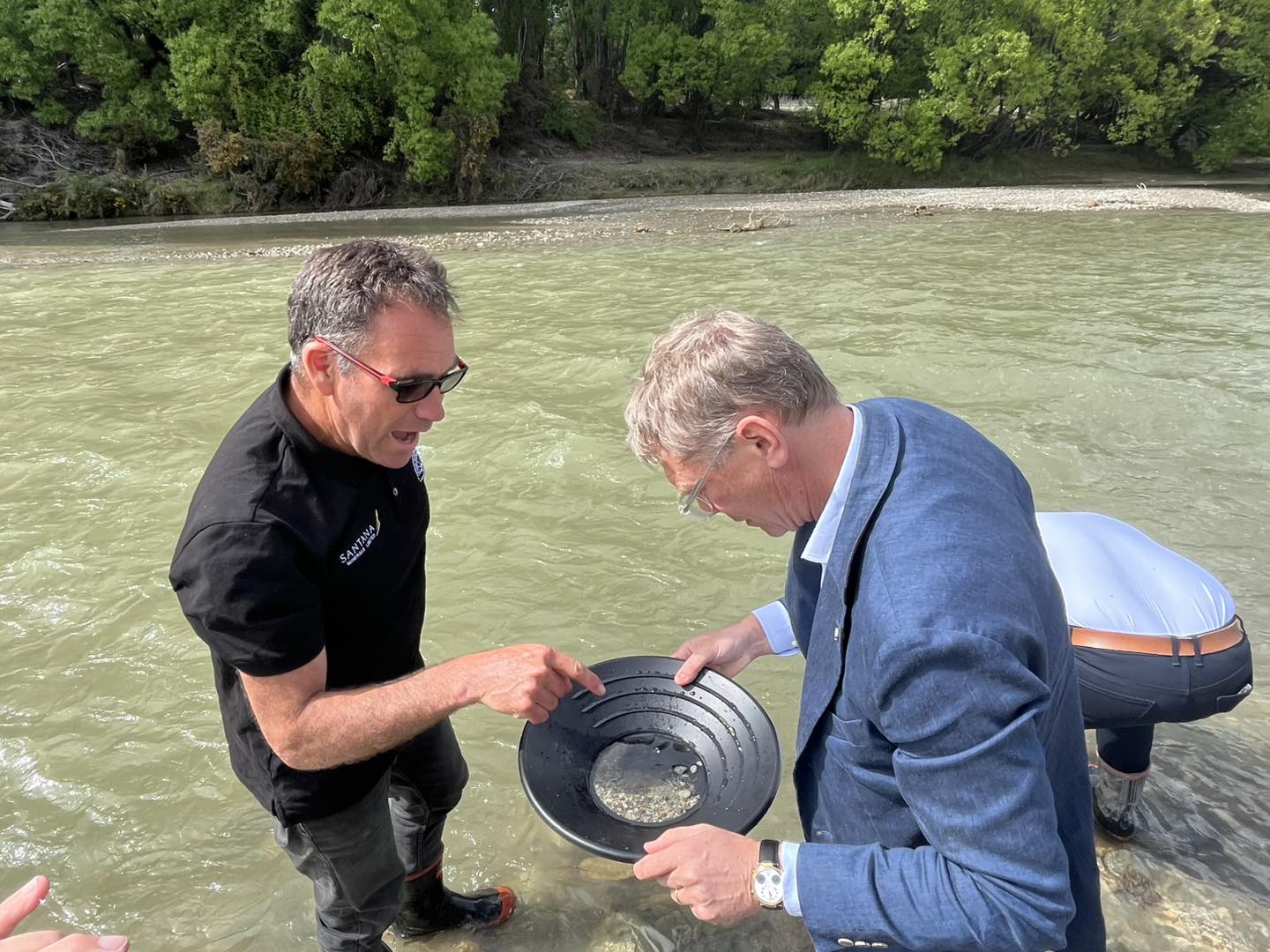Arts Minister Goldsmith Announces Creative Sector Strategy
The Government has finally outlined a strategy for the creative industries - Paul Goldsmith breaks down the target areas, as a public consultation window opens.
Written by

Since winning last year's election, Paul Goldsmith has always been skeptical of the Government having a creative policy.
As he frequently states, "The whole point of the creative sector is you should do whatever the hell you want - and the last thing you need is Government direction or suggestions."
But he concedes that the political decision makers do have the power to "either help or hinder" that process.
On Monday morning (4 November), the Minister of Arts, Culture and Heritage announced 'Amplify' - a strategy designed to increase Kiwis’ engagement with culture and creativity and to boost its economic contribution - while attending the National Summit on the Economic and Wellbeing Value of Live Performance in Aotearoa New Zealand, held at Massey University's College of Creative Arts (CoCA).
Goldsmith states “Amplify has been released for public consultation and I encourage people to read the strategy and to share their feedback.
“There’s an opportunity to increase the impact of our arts and culture here and on the world stage, and significantly increase the sectors’ contribution to GDP and export revenue by 2030.
“Our creative and cultural sectors also face many common challenges, so Amplify uses the levers the Government has to help.”
Targets for the creative sector strategy
Addressing the collective of creatives at CoCA, Goldsmith outlined Amplify's four key targets:
New Zealand to rank among the top 25 nations in the world for culture and heritage ‘soft power’
"There are various measures, and we're a bit further down (the list) than that, but it's recognizing that we want New Zealand to be as well known for its creative sector - its film and music (sectors) - as we are for our lamb chops, our milk and our beautiful scenery.
"We have obviously areas of absolute excellence right now and it's worthwhile building on that."
The median income for creative professionals to more closely match the median wage/salary income of the country
Whether this is from listening to the creative community on one of the most disheartening and oft-signaled figures that shows the importance of supprting creatives - or purely an economical drive with the over-all economy in mind - Goldsmith has no doubt landed on a target that will be supported by all in the sector.
"That's a well known issue that's bedeviled the sector - that many people have wonderful, fulfilling professional lives in the space, but they struggle to make a decent living, and that's important."
The GDP contribution from the arts and creative sector to increase to at least $20 billion
Speaking to the live performance focussed audience at CoCA, Goldsmith outlines "One of the measures that we (currently) use is around $16 billion for the sector, which was from a study recently - that's a broad creative sector, not just live performance, but also looking at things as far as design and architecture.
"We want to grow that because as we're all conscious of the fact that one of the biggest challenges we have as a country is how do we make a living in this world and continue to have the standard living that we aspire to - right here, right now.
"We're still running a $13 billion deficit, and that's a big issue. We've got debt. So when the reality is we've got to find some way to grow the economy, and we can do that in our traditional areas, but we can also do that very much in this space. So how do we grow that?"
More New Zealanders to actively engage with New Zealand arts, culture, and heritage
It was one of the catch calls of the pandemic - Kiwis turn to the arts when they need escape and entertainment, but the needs of those of who help provide that avenue are regularly not reciprocated.

Goldsmith expands "There are many massive measures that indicate that most New Zealanders engage in the arts in the broader sense, whether it's from kapa haka through to dance, through to music to listening to New Zealand modern music and heritage."
Goldsmith notes that includes everything from his seeing a show to his recent trip to Wanaka for goldpanning - "The history and heritage of all parts of New Zealand - New Zealanders love (them) and engage, and that makes a real contribution."
Breaking down the strategy pillars
To achieve the above targets, Goldsmith identifies three strategic pillars "to outline actions the Government will take over the next six years to reach these targets."
Maximising impact through the $450m annual Crown investment
"A lot of it goes to subsidising films, but also big investments in places like Te Papa, Symphony Orchestra, Creative New Zealand, New Zealand On Air - we want to think very carefully about purposefully leveraging that investment so that it draws in philanthropic investment, local government investment.
"Local Government is a huge investor in this space and we need to be working together, also (with) commercial investment, focus on audiences and markets - and not just letting it happen by accident but being very careful about how we do that.
"Making sure that we get the very best outcomes we can from the investment that we make."
Nurturing talent and supporting a pipeline to provide sustainable career opportunities
With the setting of his announcement in mind, Goldsmith - himself a concert pianist - expands "Of course, that starts off in the education sector, ensuring that all our young New Zealanders are exposed to the broad range of the arts, and again, right across from kapa haka through to Shakespeare, through to all the other things in between."
This has been the arena of heated discussion within the creative community on many occasions - with the defunding of Creatives in Schools raising plenty of ire, leading to calls from both local and overseas creative leaders for the arts to get more support in the educiation process (across primary, secondary and tertiary levels).
Goldsmith retorts "There's a sort of a myth going on about the fact that we're focused on literacy and numeracy means we're not interested in the arts. It's that's nonsense. Of course, having a core literacy is the foundation upon which everything builds - and numeracy - and so getting those basics right, the fundamentals upon which you can grow you can't study history if you can't read books. It's pretty basic.
"There are many key institutions that are important to providing opportunities for mid career professionals and later career professionals, and how we do that so institutions like Te Papa, Symphony Orchestra and Matatini are all providing opportunities for people to thrive and continue.
"We're going to be thinking very carefully about that."
Reducing barriers to growth – modernising and streamlining government regulation to enable our cultural sectors to thrive
Goldsmith acknowledges "there are hardcore legislative elements around copyright and intellectual property" but also far more "pragmatic" and "mundane" regulatory approaches.
He uses one of his regular examples fromwhere a member of an audience he once spoke to pointed out that the live music industry can be effected by the likes of liquor liscening laws, public parking and safety in respective CBDs.
"I think we need to give plenty of attention to (those areas listed above) and recognise that many of people involved in the arts are - in effect - small business people trying to make a living."
Time for submissions
With the announcement made, Amplify is now open to public consultation - Goldsmith stating he encourages the creative community to give their submission in the coming weeks before the feedback window closes on 15 December.
“This is just a draft and I am open to ideas.”